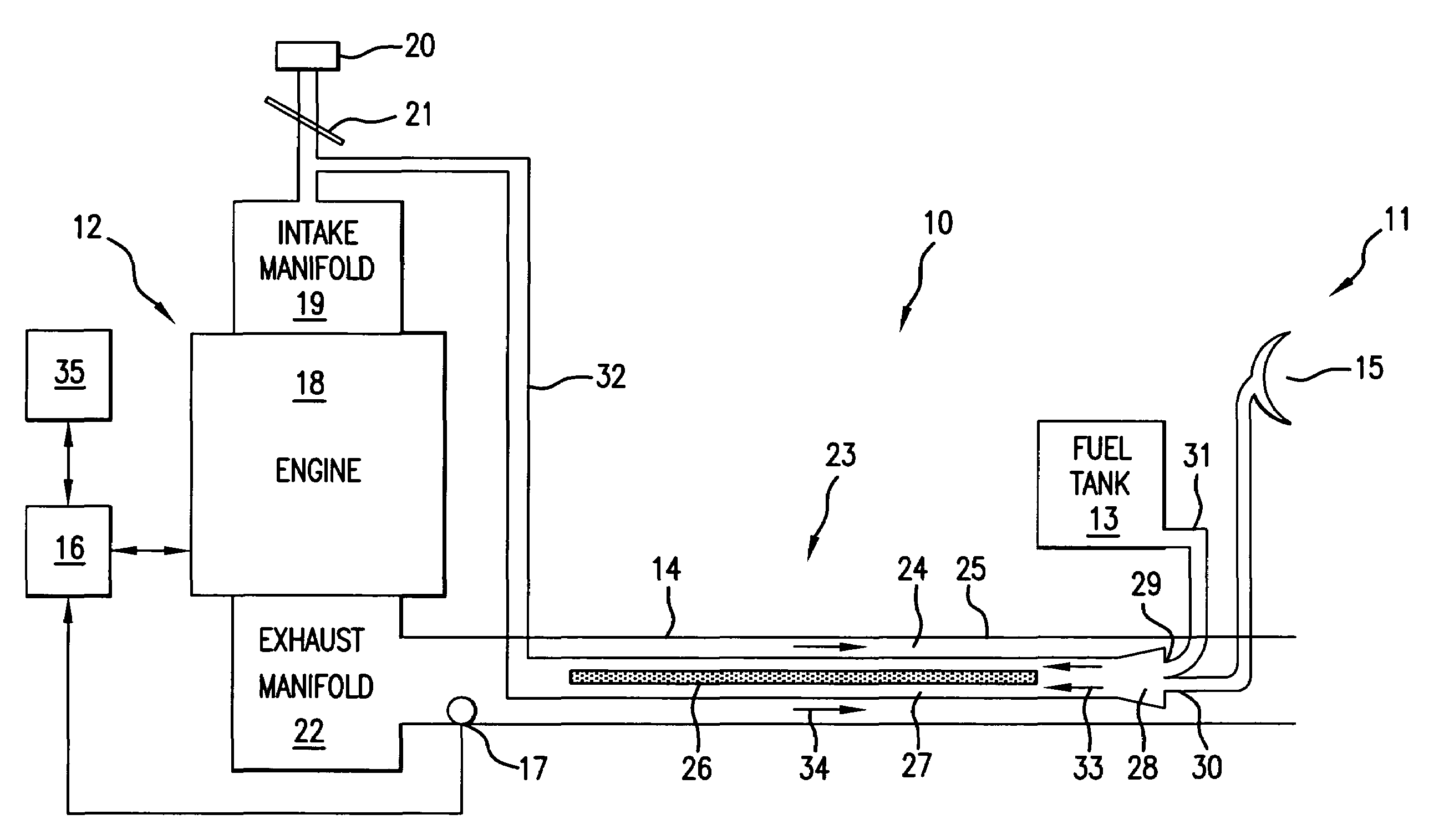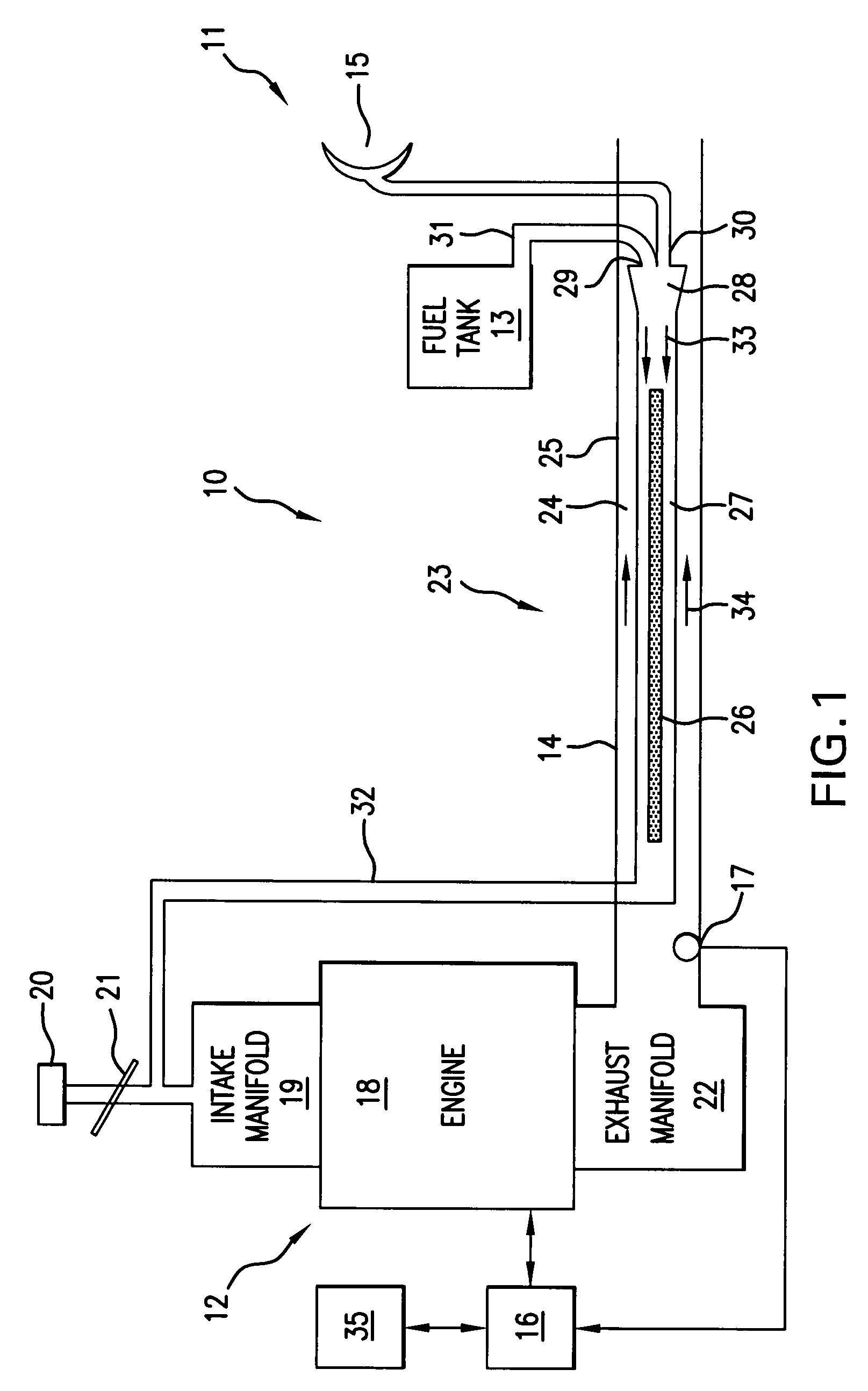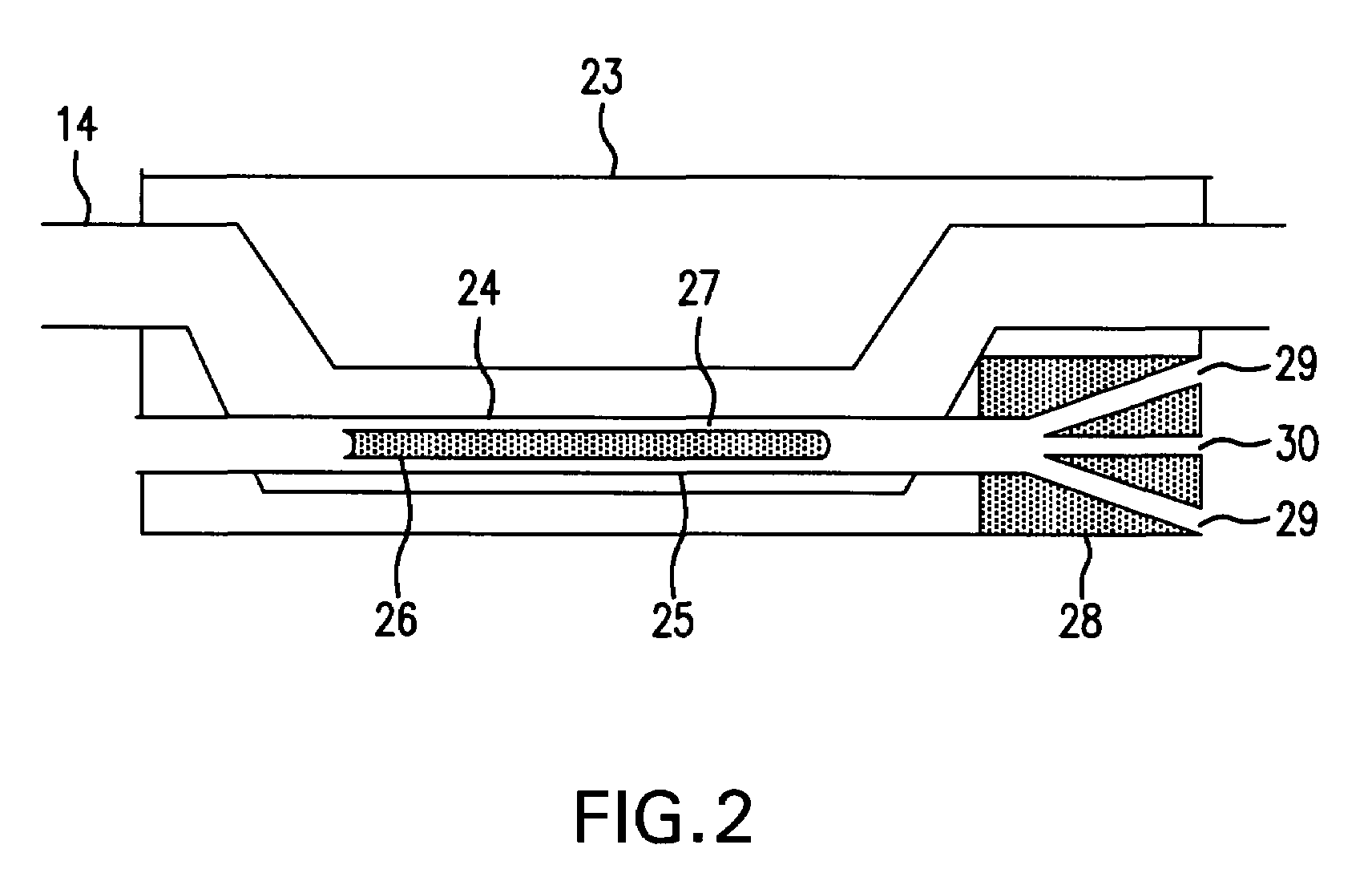Pre-ignition fuel treatment system
a fuel treatment system and ignition technology, applied in the direction of combustion engine, combustion-air/fuel-air treatment, charge feed system, etc., can solve the problems of fatal design flaws, hydrocarbon cracking, and large amount of energy required to complete the reaction
- Summary
- Abstract
- Description
- Claims
- Application Information
AI Technical Summary
Benefits of technology
Problems solved by technology
Method used
Image
Examples
Embodiment Construction
[0031]Referring to FIG. 1, a pre-ignition fuel treatment system 10 is installed in a motor vehicle 11 having an internal combustion engine 12, a fuel tank 13, an exhaust pipe 14, an air inlet 15, an engine control module (ECM) 16, and one or more engine / emissions sensors 17. The fuel tank 12 stores a hydrocarbon fuel that is mixed with air to make a fuel-air mixture 33 that is combusted in the engine 12. Optionally, water or steam can also be added to the fuel-air mixture 33. Combustion by-products and excess air, collectively referred to as exhaust gases 33, exit from the vehicle to the external atmosphere through an exhaust pipe 14. The engine / emissions sensors 17 monitor the air-to-fuel ratio and / or the amount of oxygen in the exhaust gases 34.
[0032]The engine 12 comprises a plurality of cylinders 18, an intake manifold 19, an air filter 20, a throttle plate 21, and an exhaust manifold 22. In the cylinders 18 the fuel-air mixture 33 is combusted and the exhaust gases 34 are expel...
PUM
 Login to View More
Login to View More Abstract
Description
Claims
Application Information
 Login to View More
Login to View More - R&D
- Intellectual Property
- Life Sciences
- Materials
- Tech Scout
- Unparalleled Data Quality
- Higher Quality Content
- 60% Fewer Hallucinations
Browse by: Latest US Patents, China's latest patents, Technical Efficacy Thesaurus, Application Domain, Technology Topic, Popular Technical Reports.
© 2025 PatSnap. All rights reserved.Legal|Privacy policy|Modern Slavery Act Transparency Statement|Sitemap|About US| Contact US: help@patsnap.com



